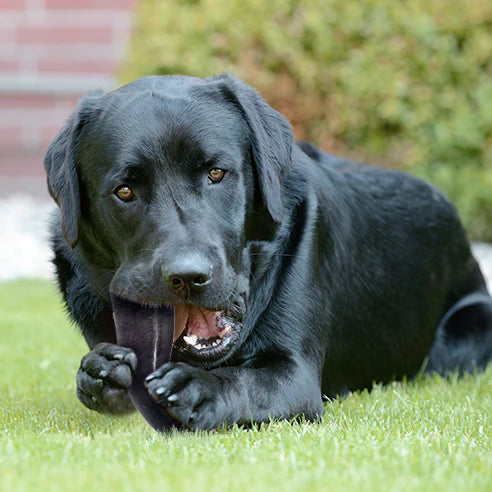Step into the world of wagging tails and paw prints as we embark on a journey to decode the subtle language of our canine companions. Have you ever felt confused when your pup seemingly ignored your well-intentioned commands or gentle requests?
Picture this: the air is filled with the familiar scent of wet fur and the comforting warmth of a sunlit afternoon.
You find yourself wondering why your furry confidant isn't catching on. It's like navigating a playful puzzle; in this guide, we're here to unravel why your dog might not be picking up on your cues. In this guide, we'll explore common reasons why your dog might not be listening and provide practical solutions to strengthen the bond between you and your four-legged companion.

-
Lack of Training or Inconsistent Training:
Imagine the relationship between you and your dog as a dance. Without proper training or consistent choreography, it's easy to step on each other's toes. Dogs, much like dance partners, need clear guidance to understand the steps you want them to take. If training is lacking or inconsistent, your dog may find it challenging to follow your lead.
Signs of Insufficient Training:
- Confusion: Your dog may appear confused when given commands, uncertain about what is expected.
- Lack of Focus: Inconsistent training can lead to a lack of focus, with your dog easily becoming distracted during sessions.
- Misbehavior: Dogs thrive on structure. Without consistent training, they may resort to undesirable behaviors as they try to make sense of their environment.
Solutions:
Establish a Consistent Routine:
Dogs thrive on routine and predictability. Set a consistent schedule for feeding, walks, and training sessions.
This routine provides structure and helps your dog anticipate what's expected.
Clear and Simple Commands:
Keep your commands clear, concise, and consistent. Use the same words for specific actions to avoid confusion.
For example, if you use "sit," stick to that term rather than alternating with "sit down" or "take a seat."
Patience and Persistence:
Training is an ongoing process. Be patient and persistent, understanding that learning takes time.
Consistent reinforcement over an extended period reinforces good behavior.
Professional Training Assistance:
Consider enrolling in obedience classes or seeking the help of a professional dog trainer.
Professional trainers can guide effective training techniques tailored to your dog's needs.
Integration into Daily Life:
Training isn't confined to dedicated sessions. Integrate commands into daily activities, reinforcing good behavior throughout the day.
For example, ask your dog to sit before mealtime or before going for a walk.

2. Distractions:
Issue: Dogs are easily distracted, especially in new or stimulating environments. Distractions can divert their attention away from your commands.
Solution:
Begin training in a quiet environment before gradually increasing distractions.
Use treats or toys to redirect focus back to you during training.
Practice commands in different settings to generalize obedience.
3. Health Issues:
Issue: Pain or discomfort due to health issues can affect a dog's responsiveness. Hearing loss, joint pain, or dental problems may hinder their ability to follow commands.
Solution:
- Schedule regular veterinary check-ups to address potential health concerns.
- Adapt training methods to accommodate any physical limitations.

4. Lack of Positive Reinforcement:
Issue: Dogs thrive on positive reinforcement. If they don't associate following commands with rewards, they may lack motivation to listen.
Solution:
- Use treats, dog chews, praise, or play as positive reinforcement for good behavior.
- Consistently reward desired actions to reinforce positive associations.
5. Miscommunication:
Issue: Dogs may not understand commands if they are given in a language or tone unfamiliar to them.
Solution:
- Use clear and consistent verbal commands.
- Pay attention to your body language, as dogs often rely on visual cues.
- Experiment with different tones to find what resonates best with your dog.

6. Fear or Anxiety:
Issue: Dogs, like humans, can experience fear and anxiety. These emotions may stem from various sources, including past traumas, lack of socialization, or exposure to frightening stimuli. Fearful or anxious dogs may not readily respond to commands due to heightened stress levels.
Symptoms of Fear or Anxiety in Dogs:
- Trembling or shaking
- Pacing or restlessness
- Excessive panting or drooling
- Avoidance behavior (hiding, cowering)
- Destructive behavior (chewing, digging)
- Excessive barking or whining
- Aggression (growling, snapping)
- Causes of Fear or Anxiety:
Past Trauma: Dogs that have experienced trauma, abuse, or neglect may exhibit fearful behavior.
Lack of Socialization: Insufficient exposure to various people, environments, and situations during the critical socialization period can contribute to anxiety.
Loud Noises: Thunderstorms, fireworks, or other loud noises can trigger anxiety in some dogs.
Separation Anxiety: Dogs may become anxious when left alone, leading to destructive behavior.
Solutions:
Create a Safe Environment: Establish a safe and comfortable space where your dog can retreat when feeling anxious. Provide a cozy bed, toys, and a familiar scent.
Gradual Exposure: Gradually expose your dog to stimuli that trigger anxiety, using positive reinforcement.
For example, if your dog is afraid of loud noises, play recordings at a low volume and gradually increase it over time.
Professional Help:
- If your dog's anxiety is severe or persistent, consider seeking the assistance of a professional dog trainer or behaviorist.
- Medication may be recommended in extreme cases, but this should be discussed with a veterinarian.
Routine and Predictability:
- Establish a consistent daily routine to provide a sense of predictability.
- Dogs often feel more secure when they know what to expect.
Patience and Understanding:
- Overcoming fear or anxiety takes time and patience. Be understanding of your dog's feelings and progress, celebrating small victories along the way.
- Consistent positive reinforcement and a calm, reassuring demeanor can go a long way in building trust and reducing anxiety in your dog.











